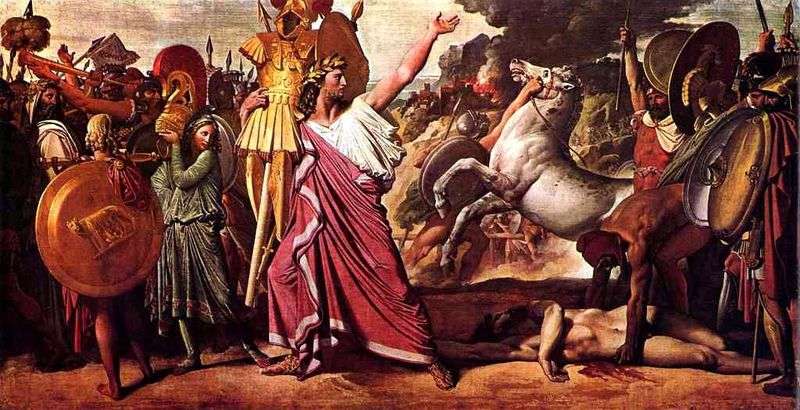
Cloth XIX century “Romulus – the winner of Akron” belongs to the work of the Frenchman Jean Auguste Dominique Ingres. It refers to the early period of the creativity of the author, namely to when Ingres was in search of his own direction, tossed between the styles of quattrocento and Nazarene.
Creativity of medieval authors interested the young Jean Auguste more than anything, so his further attack on the world of painting was closely connected with the methods of the Renaissance and directly with the Raphael school of writing. However, “Romulus – the winner of Akron” – a perfect example of Engr’s early desire to the canons of the revivalist letter with the deification of the common man and the desire for higher intelligence and beauty. It’s a pretty warm canvas, although mean to paint. It, like all the works of the artist, was not particularly picturesque and, as Nina Dmitrieva, a Soviet and Russian art critic, said, his painting has a poor color, where there are no “black-and-white effects…”.
This yellow-brown canvas with an abundance of characters, which in itself is amazing, knowing that Ingres preferred two or three heroes in his compositions. Apparently, therefore, the plotting of the plot seems not quite balanced, with proportional shortcomings in the narrative of the foreground and distant plans, people and the horse on its hind legs.
Now a little about the semantic work load. The scene that is depicted by Engr is a historical fact and refers to the period of the first war in the history of the Romans with the ancient city of Cenin in the old Latium. It was the prince of Cenina, Akron, who first attacked the Romans, who set up a roving rookery on the nearby hills. The battle was short and the ruler of Rome in a duel with Akron defeated the opponent. Then the first Roman triumph took place, about which the triumphal inscriptions from the beginning of Rome on the stone tell.
The armor of Akron, which holds the winner – Romulus in the hands on the pole, was solemnly placed in the temple of Jupiter Feretius on the capitol summit. Akron himself, killed and exposed from clothes and armor, in the work of Jean Auguste personifies the utter helplessness and triumph over the overthrown enemy.
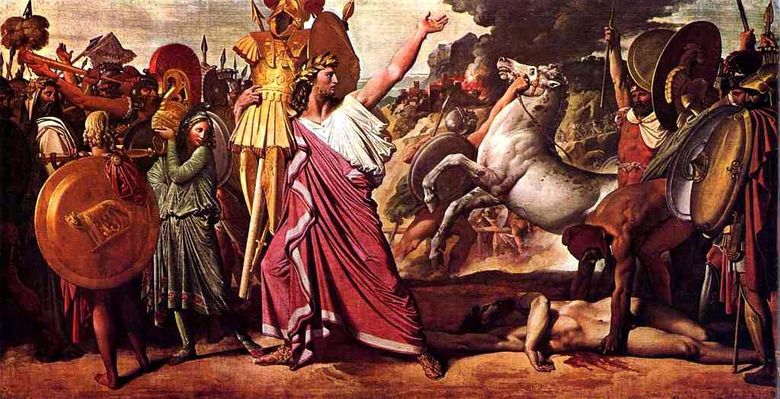 Romulus – Gagnant d’Akron – Jean Auguste Dominic Ingres
Romulus – Gagnant d’Akron – Jean Auguste Dominic Ingres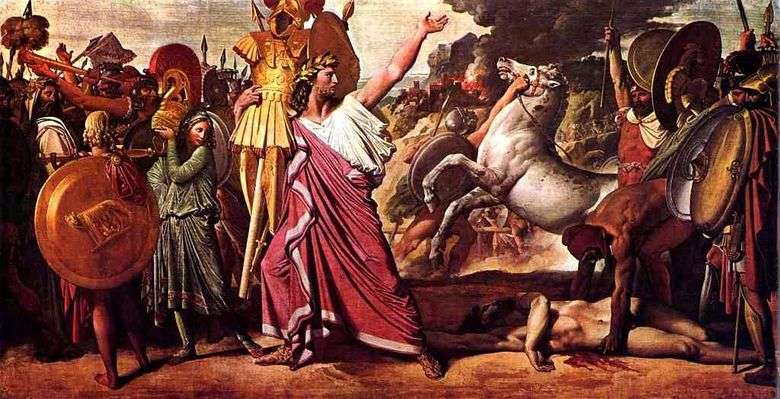 Romulus – ganador de Acron – Jean Auguste Dominique Ingres
Romulus – ganador de Acron – Jean Auguste Dominique Ingres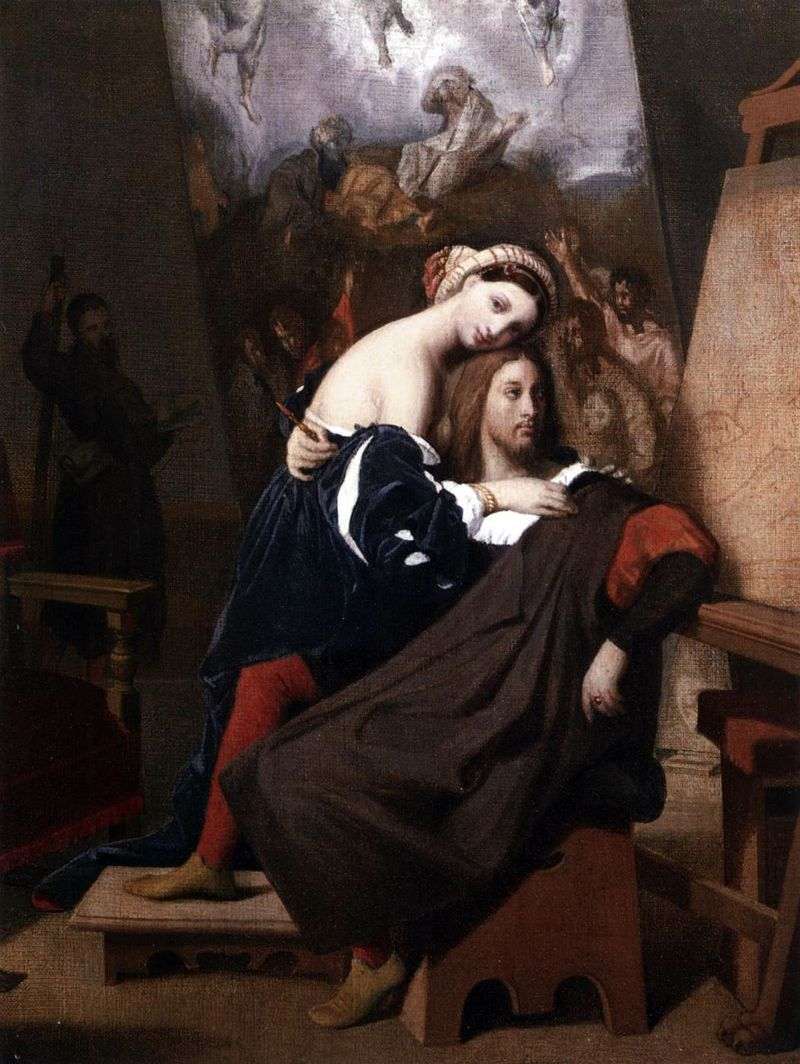 Rafael and Fornarina by Jean Auguste Dominique Ingres
Rafael and Fornarina by Jean Auguste Dominique Ingres Joan of Arc on the coronation of Charles VII by Jean Auguste Dominique Ingres
Joan of Arc on the coronation of Charles VII by Jean Auguste Dominique Ingres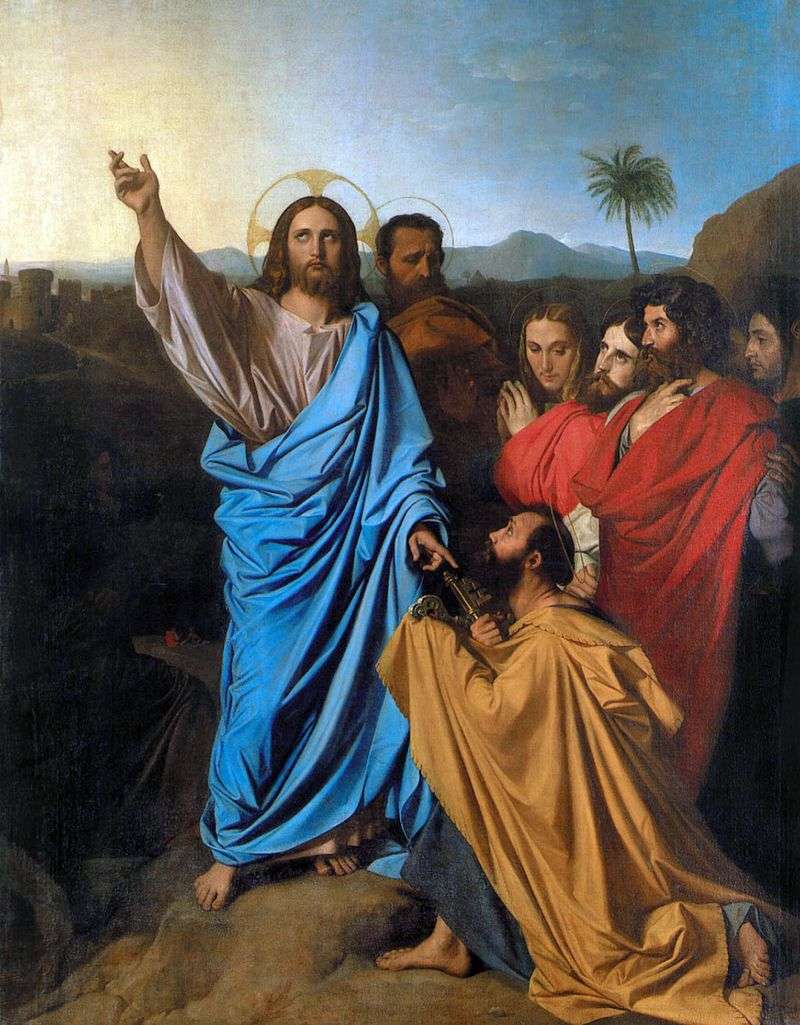 Christ transmitting St. Peter Keys from Paradise by Jean Auguste Dominique Ingres
Christ transmitting St. Peter Keys from Paradise by Jean Auguste Dominique Ingres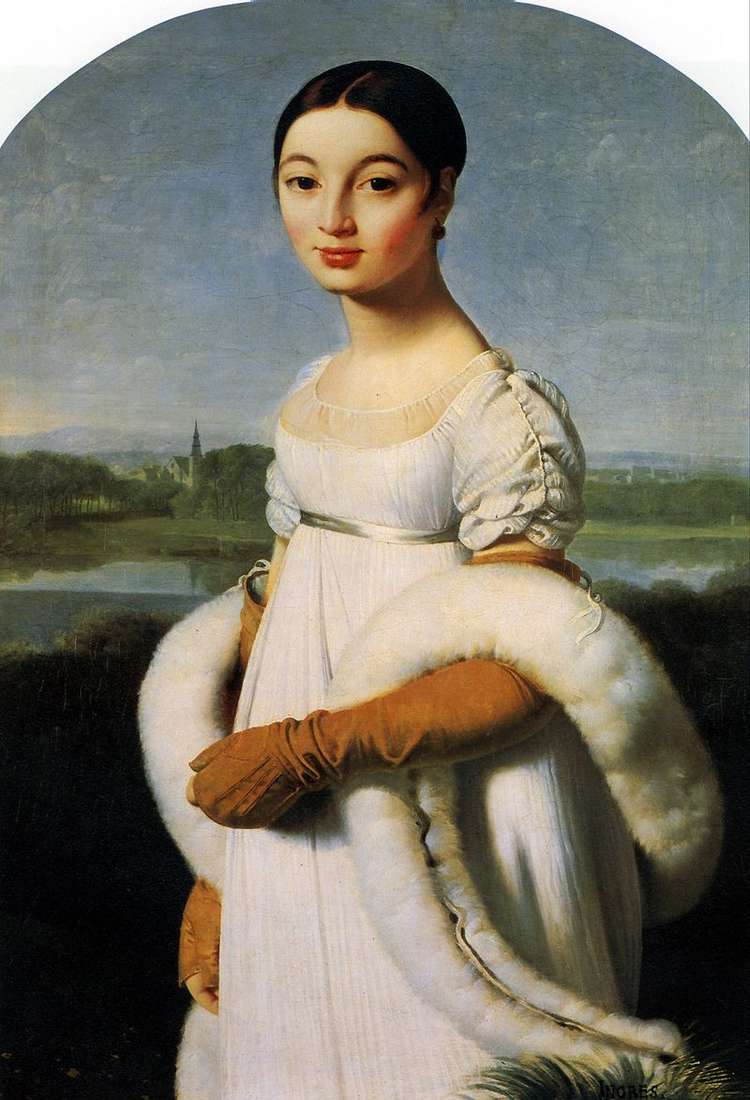 Mademoiselle Caroline Riviere by Jean Auguste Dominique Ingres
Mademoiselle Caroline Riviere by Jean Auguste Dominique Ingres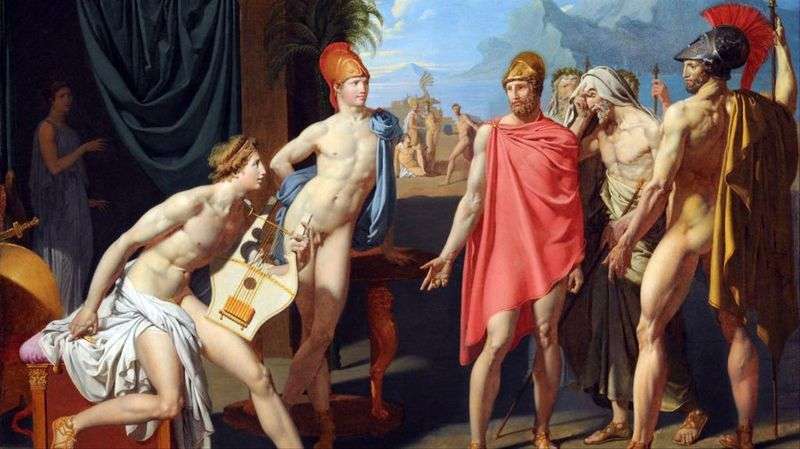 Ambassadors of Agamemnon in the tent of Achilles by Jean Auguste Dominique Ingres
Ambassadors of Agamemnon in the tent of Achilles by Jean Auguste Dominique Ingres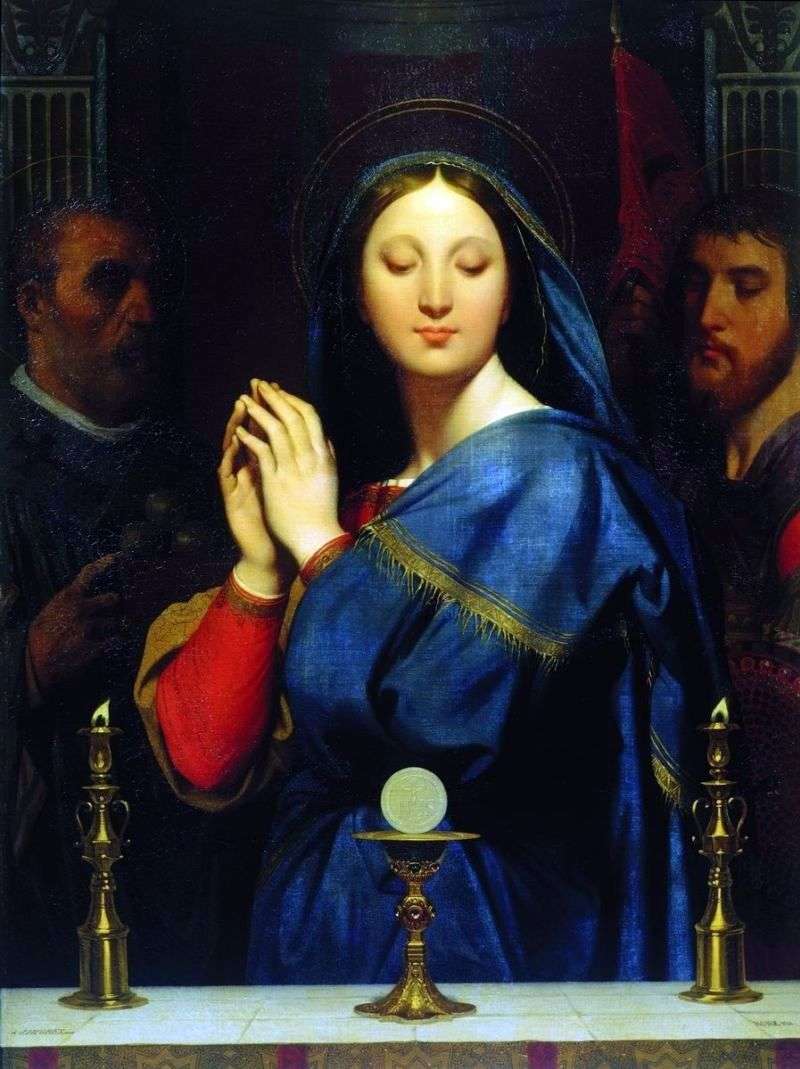 Madonna in front of a cup with participle by Jean Auguste Dominique Ingres
Madonna in front of a cup with participle by Jean Auguste Dominique Ingres